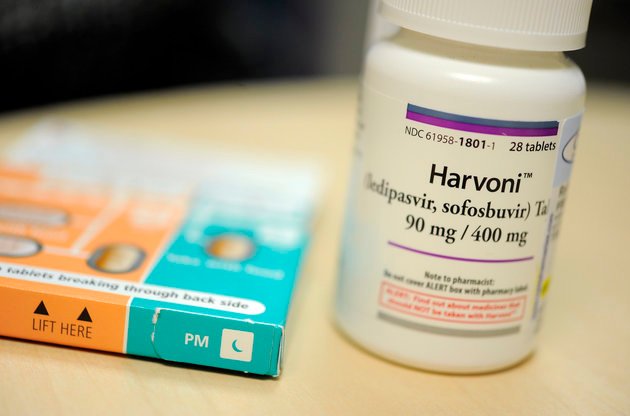The cost of dozens of brand-name drugs have nearly doubled in just the past five years. Public outrage over drug prices extends from Capitol Hill to the presidential candidates to patients. In response, pharmaceutical executives are spending more on lobbying and marketing. Yet for all this attention, most of the proposed solutions for reducing prescription drug costs—tougher negotiations, appeals for transparent R&D costs or investigations into insurers—miss one of the primary sources of the problem: the way we award patents.
Today, too many drug makers receive patents for unmerited and unjust reasons. Take, for example, the hepatitis C drug Harvoni®, which has one the largest sticker prices despite its origins in previously published information and compounds. In the last year, China and Ukraine have rejected patents for sofosbuvir, the base compound for Harvoni, on the grounds that it doesn’t deserve a patent. Or, take Baraclude, a hepatitis B drug made by Bristol-Myers Squibb whose lowest known price in the U.S. a few years ago was $15,100. In a successful patent challenge that went all the way to the U.S. Supreme Court in 2015, the generic drug maker Teva showed that the patent claim on the base compound in the brand name drug was invalid—which then allowed Teva to go on to offer a generic version for half the cost in the U.S. and for as low as $427 in the developing world by other companies.
While TV ads and sticker-shock pricing by major corporations would have us believe that every new drug they roll out is a breakthrough invention, the reality is that they are often playing games with the lax standards in the U.S. patent system.
Despite the original intent of the Hatch-Waxman Act, a 1984 federal law aimed to boost generic drug sales and reduce costs to consumers, a cottage industry of pharma lawyers, lobbyists and consultants are hired to engineer loopholes in patent laws and help the pharma industry maintain ownership of intellectual property and pricing strategies. Still, when challenged, many of pharma’s patents don’t hold up to scrutiny.
Not surprisingly, the pharma industry employs a variety of stall tactics that make it virtually impossible for affordable, generic drugs to enter the U.S. market. In what’s called “pay-for-delay,” for example, patent owners pay off generic manufacturers to wait before entering the market, a practice that could violate antitrust laws. Through life cycle management and second tier patenting strategies, companies concoct obvious changes to an existing product whose patent is about to expire in order to claim a new and improved formulation and then spend significant sums marketing it as innovation. The end result is higher prices for no real added therapeutic benefit. But, the malaise goes even deeper as companies make obvious tweaks to existing compounds so as to claim a “new chemical entity.” Patenting everything possible between existing patents through the use of known scientific techniques only leads to further gridlock in research, no new knowledge and ever increasing prices as companies pass such developments off as inventions.
As The Economist recently put it, “When patents lag behind the pace of innovation, firms end up with monopolies on the building-blocks of an industry.” Instead of a system that encourages new knowledge and competition, today’s patent system has allowed strategic and defensive practices to proliferate. Labeling things inventions when they are not distorts the value that drug companies use to charge higher and higher prices. And in healthcare, that’s the difference between people getting the medicine they need and not.
It’s time to restore the U.S. patent system to its original purpose – to protect and incentivize invention, not innovation. There’s a difference. Innovation is the investment in the commercialization of inventions. Just because a company invests money to commercialize a drug does not mean it has invented a new drug. This is where today’s patent system is broken. If we continue to muddle innovation with the patent system’s original purpose of invention, we will continue to hand out 20 years or more of monopoly power to companies for the same science over and over again and keep paying higher drug prices. Instead of incentivizing a race to the top, we are pursuing a policy of a race to the bottom. Only with genuine inventions can true medical innovations flourish and support both society’s health and a strong drug development pipeline.
I have spent two decades prosecuting, licensing and challenging undeserved patents and trademarks that should remain in the public domain. I’ve seen firsthand how, in today’s sophisticated, multi-billion dollar drug industry, patent law more often involves labeling previously published ideas or even obvious incremental adjustments of known techniques – as unique discoveries.
In America, we need to ensure patents are granted only for drugs that are novel, non-obvious and useful, which in turn will raise the bar on how we currently recognize true invention. Only then can we have a genuine discussion of when and how companies should be rewarded for their expenditures. We can fix and tighten the patent system by restoring rigor to how we attribute value to pharmaceutical products. To ensure drugs are priced fairly, we need a coordinated approach that demands greater transparency of research and development costs and strengthens patent examination that adheres to the letter and spirit of the law.
An outcome of a more rigorous approach to patents may well be that we have fewer of them—but fewer patents does not mean less progress in developing breakthrough medicines. On the contrary, a patent system with integrity will foster genuine inventions and the search for new knowledge – the benchmark of real progress that could allow better outcomes and better value for all.
Isn’t that why we invent things in the first place?
Tahir Amin
Co-founder and director of the Initiative for Medicines, Access & Knowledge

